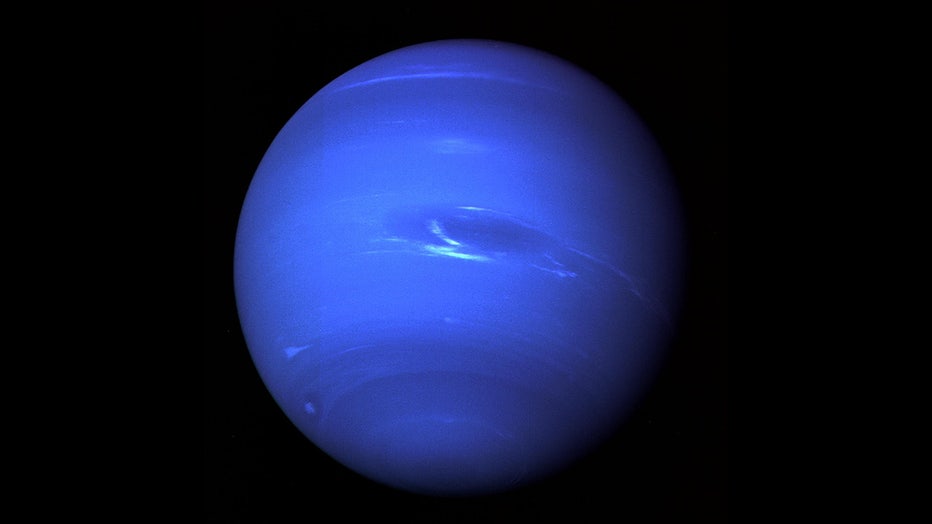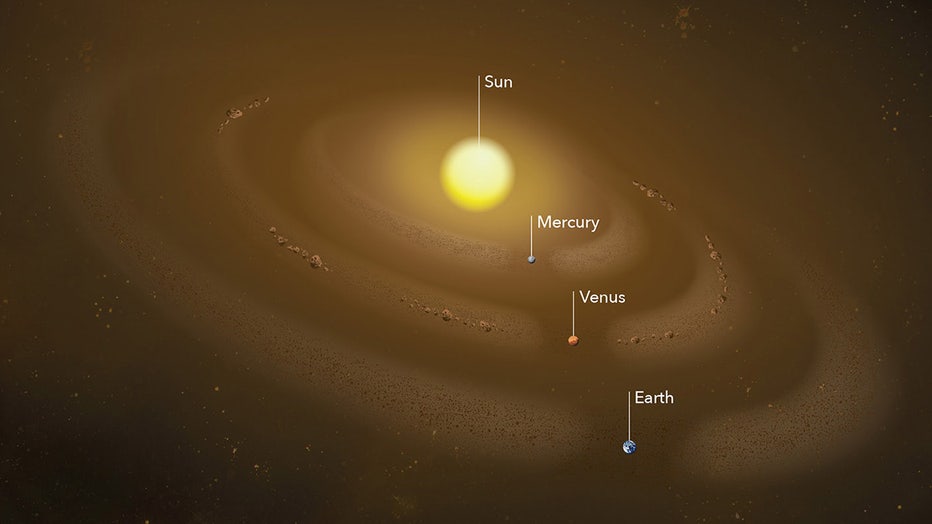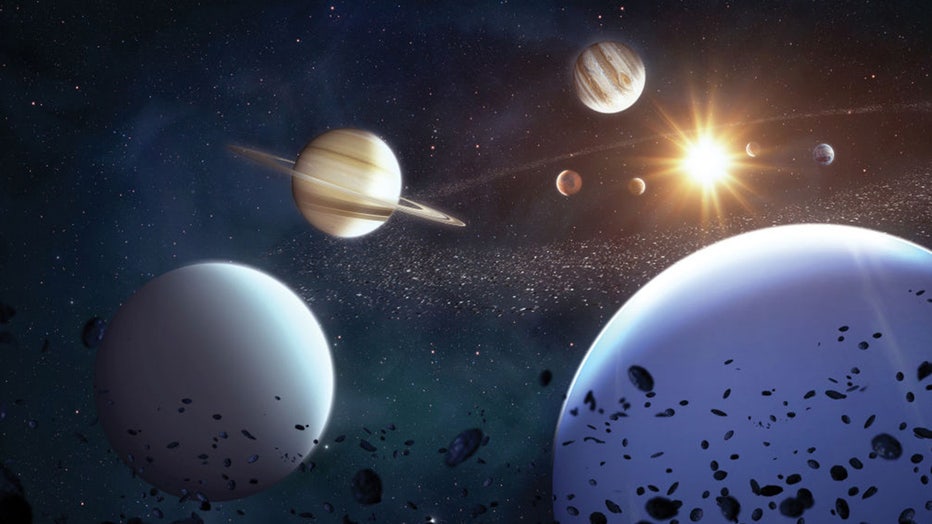If Neptune’s orbit moves 0.1%, it could destabilize the entire solar system, study says
A passing star, or a stellar flyby, with the probable to pull Neptune out of its orbit by just .1%, could suggest catastrophe for the complete photo voltaic program. But do not worry — it won’t take place in our life span, in accordance to a current review.
Researchers at the University of Toronto in Toronto, Canada, made simulations which observed how near a passing star would have to be in order to alter a earth in our solar system’s orbit and bring about a chain response of adjustments, together with the odds of that going on.
“So just like the sun’s gravity can influence actually distant objects like comets, right, so comets can be quite much away from the sun, but they continue to orbit the sun due to the fact of the sun’s potent gravity. A passing star can impact objects inside the solar technique. So our study was to set out striving to recognize how sensitive the balance of the photo voltaic method would be to be motivated by passing stars,” mentioned Garett Brown, a Ph.D. student at the College of Toronto and co-creator of the analyze.

FILE – This image of Neptune was taken by Voyager 2 significantly less than 5 days prior to the probe’s closest solution of the earth on Aug. 25, 1989, and reveals the “Good Darkish Location” — a storm in Neptune’s environment — and the vibrant, gentle-blue smudge of cloud (NASA/JPL-Caltech)
Neptune could wreck all the things
In this recent review, scientists made virtually 3,000 simulations displaying what is the minimum total of influence needed to potentially produce substantial improvements in our have solar system. It turns out, it wouldn’t just take much.
Brown claimed in this certain analyze, only stars had been thought of as stellar flybys in their simulations — stars that are 100 situations greater than our sunshine, which are exceptional. They also simulated flybys with smaller crimson dwarf stars which are about 5% the size of our sun but are 100 situations heavier than that of Jupiter.
A person of the simulations discovered that if a flyby transpired tomorrow and pulled Neptune out of its orbit just by .1%, there could be catastrophic consequences for Mercury and Venus.
“We ran the simulations until eventually Mercury crashed into Venus, or anything else took place, and then we stopped it. So, Mercury could crash into Venus and then which is it, almost nothing else comes about,” Brown mentioned.

FILE – In this illustration, quite a few dust rings circle the Sunshine. These rings sort when planets’ gravities tug dust grains into orbit all around the Sun. Lately, scientists have detected a dust ring at Mercury’s orbit. Other folks hypothesize the resource of Ve (NASA’s Goddard House Flight Middle/Mary Pat Hrybyk-Keith)
“The outcome specifically is, that if you go Neptune by this reasonably tiny volume, then in excess of the life span of the solar program, you would have a 10 times boost in the likelihood of instability. Which seems like a lot yet again, but if you just take the solar process as it is currently, completely isolated from the relaxation of the universe, there is about a 1% prospect that Mercury will crash into Venus. The solar program is chaotic, it is difficult to forecast the potential of the photo voltaic program over and above like a billion many years, but within just about 5 billion decades, there’s like a 1% chance that Mercury may well crash into Venus. So, if a star arrives by and moves Neptune by this tiny amount, then instead of a 1% prospect that Mercury will crash into Venus, now it is a 10% chance,” Brown ongoing.
Associated: New planets could start out to variety all over binary star technique, astronomers say
Brown posited that it’s possible Mercury and Venus could merge together and variety a brand name new earth. There was also an instance wherever Earth crashed into Mars. The options have been seemingly endless.
“We ran pretty much 3,000 simulations and in one of these situations we did find that the transform of Neptune’s orbit did lead to Earth to crash into Mars as a substitute, so it is achievable that one thing could materialize like that wherever it impacts Earth right. It’s significantly more rare than Mercury crashing into Venus. If this result have been to be occurring, it would be extremely challenging to tell at first and incredibly challenging to do everything about,” Brown additional.
But why Neptune? The reply is rather very simple: Neptune is the furthest absent consequently it has a far better opportunity of currently being influenced by a stellar flyby, in accordance to Brown.
It will take thousands and thousands of a long time, perhaps billions

FILE – Illustration of the solar process considered from outside of Neptune, with all eight planets visible all over the sunshine. (Tobias Roetsch/Future Publishing through Getty Impression)
The probability of a celestial event as significant as this is really slender, — so slim none of us or your grandchildren or good-grandchildren will be alive to see it — but the probabilities aren’t zero.
“So even if we observed that this was the end result of some celebration, and we could depth out what was likely to come about, the system alone would however get millions of yrs prior to the crash even took place. And then after the crash took place, then it would just be extra tough. So, if we were or if some foreseeable future species had been an sophisticated room-faring species and have loads of abilities for interplanetary vacation, they could endeavor to alter the orbit of Mercury to reduce it from going on. Due to the fact Mercury is the lightest, it could possibly be the easiest to shift but it’s also going pretty quickly so it would be really an enterprise. But if such a species were so area-faring to try something like that, they may possibly be better off likely someplace else,” Brown explained.
“It’s definitely not everything to be worried of due to the fact the time associated is just so, so long. Like, the dinosaurs died 65 million many years back and that is so, so short when compared to the time that it would get for an party like this to occur,” Brown included.
Brown reported if there’s nearly anything to worry about in a extra in close proximity to upcoming, human beings should really be nervous about the solar burning out, but again, that won’t take place for billions of years — 5 billion yrs according to experts.
“The determination behind this analyze alone was just to try out and have an understanding of how delicate the photo voltaic process is to adjust. And it is really actually pretty sturdy,” Brown reported. “So if you consider, like in a roller coaster, a roller coaster might normally go down a hill and then appear up and go down and go up and down. But if you envision that the solar program is like a roller coaster motor vehicle at the base of the hill, then you could force the roller coaster again and forth in this small hill and it is just generally heading to go back to the bottom. Simply because it’s secure and sturdy and the type of alter that you’d have to get to force it above the hill, to press it to anything catastrophic, that is the type of transform where you may well have to shift Neptune by .1%.”
This tale was noted from Los Angeles.








